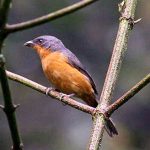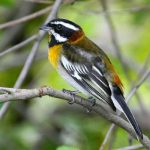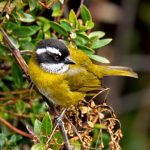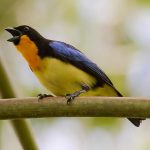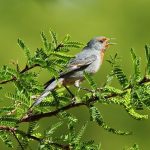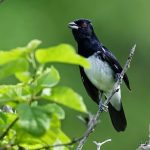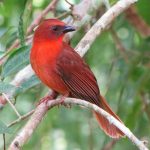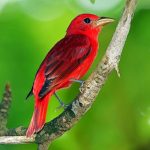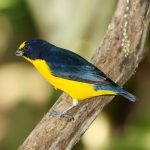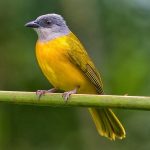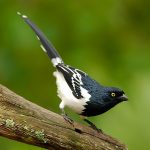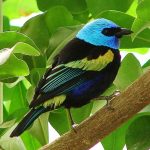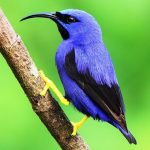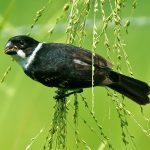Black-capped tanager
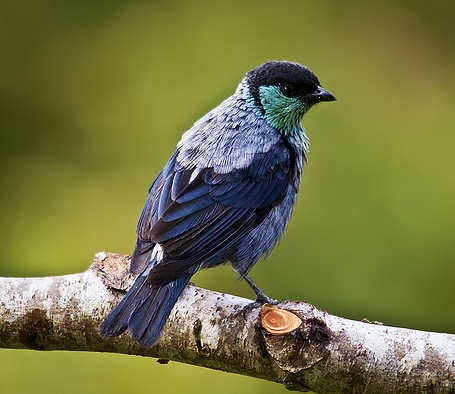
 |
| Photo by Priscilla Burcher (Flickr) |
Common name:
black-capped tanager (en); saíra-de-barrete-preto (pt); calliste à calotte noire (fr); tangara gorrinegra (es); heine-tangare (de)
Taxonomy:
Order Passeriformes
Family Thraupidae
Range:
These birds are found in mountainous areas of north-western South America, being present in north-western Venezuela, in northern and western Colombia and in northern Ecuador.
Size:
The black-capped tanager is 13 cm long and weighs 20-21 g.
Habitat:
These birds are found along the edges of humid and cloud forests and in mature second-growth forest, as well as within trees and scrubs in clearings, pastures, and open woodlands. They are present at altitudes of 1.000-2.700 m.
Diet:
They eat fruits, berries and insects.
Breeding:
Black-capped tanagers are monogamous and breed in December-August. Both sexes build the nest, an open cup made of dry grasses, rootlets and moss, placed in a small tree of bush up to 3 m above the ground. The female lays 1-2 dull blue eggs with reddish-brown blotches, which she incubates alone for 13-14 days while receiving food from the male. The chicks are fed by both parents and fledge 14-16 days after hatching.
Conservation:
IUCN status – LC (Least concern)
This species has a restricted breeding range and is described as uncommon. The population is suspected to be stable in the absence of evidence for any declines or substantial threats.
